Refine search
No keyword found to refine search
keywords EN
Places
Names
695 documents found
| 1 | 12 |
Documents per page :

Illustrations of a ski resort in Bresse.
Nicolas Landemard / Le Pictorium
LePictorium_0289641.jpg
Those involved in tourism in the Bresse Hohnek region can all testify to a disastrous 2024 winter season overall, with visitor numbers down by between 30% and 40%. The resort itself is suffering from a real lack of snow and has had to close a large part of its ski area. The lack of snow is one of the main explanations, but so is the rising cost of living in France.

Illustrations of a ski resort in Bresse.
Nicolas Landemard / Le Pictorium
LePictorium_0289642.jpg
Those involved in tourism in the Bresse Hohnek region can all testify to a disastrous 2024 winter season overall, with visitor numbers down by between 30% and 40%. The resort itself is suffering from a real lack of snow and has had to close a large part of its ski area. The lack of snow is one of the main explanations, but so is the rising cost of living in France.

Illustrations of a ski resort in Bresse.
Nicolas Landemard / Le Pictorium
LePictorium_0289643.jpg
Those involved in tourism in the Bresse Hohnek region can all testify to a disastrous 2024 winter season overall, with visitor numbers down by between 30% and 40%. The resort itself is suffering from a real lack of snow and has had to close a large part of its ski area. The lack of snow is one of the main explanations, but so is the rising cost of living in France.

Illustrations of a ski resort in Bresse.
Nicolas Landemard / Le Pictorium
LePictorium_0289644.jpg
Those involved in tourism in the Bresse Hohnek region can all testify to a disastrous 2024 winter season overall, with visitor numbers down by between 30% and 40%. The resort itself is suffering from a real lack of snow and has had to close a large part of its ski area. The lack of snow is one of the main explanations, but so is the rising cost of living in France.

Illustrations of a ski resort in Bresse.
Nicolas Landemard / Le Pictorium
LePictorium_0289645.jpg
Those involved in tourism in the Bresse Hohnek region can all testify to a disastrous 2024 winter season overall, with visitor numbers down by between 30% and 40%. The resort itself is suffering from a real lack of snow and has had to close a large part of its ski area. The lack of snow is one of the main explanations, but so is the rising cost of living in France.

Illustrations of a ski resort in Bresse.
Nicolas Landemard / Le Pictorium
LePictorium_0289646.jpg
Those involved in tourism in the Bresse Hohnek region can all testify to a disastrous 2024 winter season overall, with visitor numbers down by between 30% and 40%. The resort itself is suffering from a real lack of snow and has had to close a large part of its ski area. The lack of snow is one of the main explanations, but so is the rising cost of living in France.

Illustrations of a ski resort in Bresse.
Nicolas Landemard / Le Pictorium
LePictorium_0289647.jpg
Those involved in tourism in the Bresse Hohnek region can all testify to a disastrous 2024 winter season overall, with visitor numbers down by between 30% and 40%. The resort itself is suffering from a real lack of snow and has had to close a large part of its ski area. The lack of snow is one of the main explanations, but so is the rising cost of living in France.

Illustrations of a ski resort in Bresse.
Nicolas Landemard / Le Pictorium
LePictorium_0289648.jpg
Those involved in tourism in the Bresse Hohnek region can all testify to a disastrous 2024 winter season overall, with visitor numbers down by between 30% and 40%. The resort itself is suffering from a real lack of snow and has had to close a large part of its ski area. The lack of snow is one of the main explanations, but so is the rising cost of living in France.

Illustrations of a ski resort in Bresse.
Nicolas Landemard / Le Pictorium
LePictorium_0289649.jpg
Those involved in tourism in the Bresse Hohnek region can all testify to a disastrous 2024 winter season overall, with visitor numbers down by between 30% and 40%. The resort itself is suffering from a real lack of snow and has had to close a large part of its ski area. The lack of snow is one of the main explanations, but so is the rising cost of living in France.

Illustrations of a ski resort in Bresse.
Nicolas Landemard / Le Pictorium
LePictorium_0289650.jpg
Those involved in tourism in the Bresse Hohnek region can all testify to a disastrous 2024 winter season overall, with visitor numbers down by between 30% and 40%. The resort itself is suffering from a real lack of snow and has had to close a large part of its ski area. The lack of snow is one of the main explanations, but so is the rising cost of living in France.

Illustrations of a ski resort in Bresse.
Nicolas Landemard / Le Pictorium
LePictorium_0289651.jpg
Those involved in tourism in the Bresse Hohnek region can all testify to a disastrous 2024 winter season overall, with visitor numbers down by between 30% and 40%. The resort itself is suffering from a real lack of snow and has had to close a large part of its ski area. The lack of snow is one of the main explanations, but so is the rising cost of living in France.

Illustrations of a ski resort in Bresse.
Nicolas Landemard / Le Pictorium
LePictorium_0289652.jpg
Those involved in tourism in the Bresse Hohnek region can all testify to a disastrous 2024 winter season overall, with visitor numbers down by between 30% and 40%. The resort itself is suffering from a real lack of snow and has had to close a large part of its ski area. The lack of snow is one of the main explanations, but so is the rising cost of living in France.

Illustrations of a ski resort in Bresse.
Nicolas Landemard / Le Pictorium
LePictorium_0289653.jpg
Those involved in tourism in the Bresse Hohnek region can all testify to a disastrous 2024 winter season overall, with visitor numbers down by between 30% and 40%. The resort itself is suffering from a real lack of snow and has had to close a large part of its ski area. The lack of snow is one of the main explanations, but so is the rising cost of living in France.

Illustrations of a ski resort in Bresse.
Nicolas Landemard / Le Pictorium
LePictorium_0289654.jpg
Those involved in tourism in the Bresse Hohnek region can all testify to a disastrous 2024 winter season overall, with visitor numbers down by between 30% and 40%. The resort itself is suffering from a real lack of snow and has had to close a large part of its ski area. The lack of snow is one of the main explanations, but so is the rising cost of living in France.

Illustrations of a ski resort in Bresse.
Nicolas Landemard / Le Pictorium
LePictorium_0289655.jpg
Those involved in tourism in the Bresse Hohnek region can all testify to a disastrous 2024 winter season overall, with visitor numbers down by between 30% and 40%. The resort itself is suffering from a real lack of snow and has had to close a large part of its ski area. The lack of snow is one of the main explanations, but so is the rising cost of living in France.

Illustrations of a ski resort in Bresse.
Nicolas Landemard / Le Pictorium
LePictorium_0289656.jpg
Those involved in tourism in the Bresse Hohnek region can all testify to a disastrous 2024 winter season overall, with visitor numbers down by between 30% and 40%. The resort itself is suffering from a real lack of snow and has had to close a large part of its ski area. The lack of snow is one of the main explanations, but so is the rising cost of living in France.

Illustrations of a ski resort in Bresse.
Nicolas Landemard / Le Pictorium
LePictorium_0289657.jpg
Those involved in tourism in the Bresse Hohnek region can all testify to a disastrous 2024 winter season overall, with visitor numbers down by between 30% and 40%. The resort itself is suffering from a real lack of snow and has had to close a large part of its ski area. The lack of snow is one of the main explanations, but so is the rising cost of living in France.

Illustrations of a ski resort in Bresse.
Nicolas Landemard / Le Pictorium
LePictorium_0289658.jpg
Those involved in tourism in the Bresse Hohnek region can all testify to a disastrous 2024 winter season overall, with visitor numbers down by between 30% and 40%. The resort itself is suffering from a real lack of snow and has had to close a large part of its ski area. The lack of snow is one of the main explanations, but so is the rising cost of living in France.

Illustrations of a ski resort in Bresse.
Nicolas Landemard / Le Pictorium
LePictorium_0289659.jpg
Those involved in tourism in the Bresse Hohnek region can all testify to a disastrous 2024 winter season overall, with visitor numbers down by between 30% and 40%. The resort itself is suffering from a real lack of snow and has had to close a large part of its ski area. The lack of snow is one of the main explanations, but so is the rising cost of living in France.

Illustrations of a ski resort in Bresse.
Nicolas Landemard / Le Pictorium
LePictorium_0289660.jpg
Those involved in tourism in the Bresse Hohnek region can all testify to a disastrous 2024 winter season overall, with visitor numbers down by between 30% and 40%. The resort itself is suffering from a real lack of snow and has had to close a large part of its ski area. The lack of snow is one of the main explanations, but so is the rising cost of living in France.

Illustrations of a ski resort in Bresse.
Nicolas Landemard / Le Pictorium
LePictorium_0289661.jpg
Those involved in tourism in the Bresse Hohnek region can all testify to a disastrous 2024 winter season overall, with visitor numbers down by between 30% and 40%. The resort itself is suffering from a real lack of snow and has had to close a large part of its ski area. The lack of snow is one of the main explanations, but so is the rising cost of living in France.
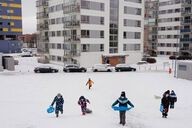
Illustrative pictures of Lithuania
Jan Schmidt-Whitley/Le Pictorium
LePictorium_0289390.jpg
Scenes of winter in Vilnius with snow in the streets. Catholic church under the snow. Children playing in the snow.
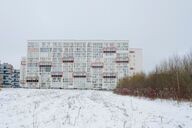
Illustrative pictures of Lithuania
Jan Schmidt-Whitley/Le Pictorium
LePictorium_0289391.jpg
Scenes of winter in Vilnius with snow in the streets.
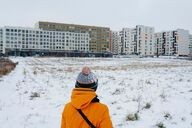
Illustrative pictures of Lithuania
Jan Schmidt-Whitley/Le Pictorium
LePictorium_0289392.jpg
Scenes of winter in Vilnius with snow in the streets. Catholic church under the snow. Children playing in the snow.
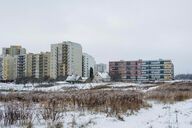
Illustrative pictures of Lithuania
Jan Schmidt-Whitley/Le Pictorium
LePictorium_0289393.jpg
Scenes of winter in Vilnius with snow in the streets.
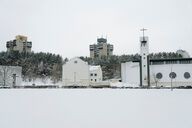
Illustrative pictures of Lithuania
Jan Schmidt-Whitley/Le Pictorium
LePictorium_0289394.jpg
Scenes of winter in Vilnius with snow in the streets. Catholic church under the snow.
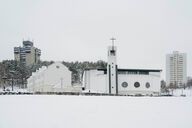
Illustrative pictures of Lithuania
Jan Schmidt-Whitley/Le Pictorium
LePictorium_0289395.jpg
Scenes of winter in Vilnius with snow in the streets. Catholic church under the snow.
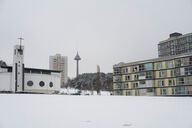
Illustrative pictures of Lithuania
Jan Schmidt-Whitley/Le Pictorium
LePictorium_0289396.jpg
Scenes of winter in Vilnius with snow in the streets. Catholic church under the snow.
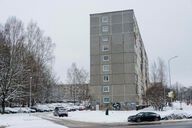
Illustrative pictures of Lithuania
Jan Schmidt-Whitley/Le Pictorium
LePictorium_0289397.jpg
Scenes of winter in Vilnius with snow in the streets.

LA PLAGNE
Michael Bunel / Le Pictorium
LePictorium_0288586.jpg
Black and white illustrations of skiers on the slopes of the La Plagne alpine resort in Savoie. February 03, 2024. La Plagne, France.

LA PLAGNE
Michael Bunel / Le Pictorium
LePictorium_0288587.jpg
Black and white illustrations of skiers on the slopes of the La Plagne alpine resort in Savoie. February 03, 2024. La Plagne, France.

LA PLAGNE
Michael Bunel / Le Pictorium
LePictorium_0288588.jpg
Black and white illustrations of skiers on the slopes of the La Plagne alpine resort in Savoie. February 03, 2024. La Plagne, France.

LA PLAGNE
Michael Bunel / Le Pictorium
LePictorium_0288589.jpg
Black and white illustrations of skiers on the slopes of the La Plagne alpine resort in Savoie. February 03, 2024. La Plagne, France.

LA PLAGNE
Michael Bunel / Le Pictorium
LePictorium_0288590.jpg
Black and white illustrations of skiers on the slopes of the La Plagne alpine resort in Savoie. February 03, 2024. La Plagne, France.

LA PLAGNE
Michael Bunel / Le Pictorium
LePictorium_0288591.jpg
Black and white illustrations of skiers on the slopes of the La Plagne alpine resort in Savoie. February 03, 2024. La Plagne, France.

LA PLAGNE
Michael Bunel / Le Pictorium
LePictorium_0288592.jpg
Black and white illustrations of skiers on the slopes of the La Plagne alpine resort in Savoie. February 03, 2024. La Plagne, France.

LA PLAGNE
Michael Bunel / Le Pictorium
LePictorium_0288593.jpg
Black and white illustrations of skiers on the slopes of the La Plagne alpine resort in Savoie. February 03, 2024. La Plagne, France.

LA PLAGNE
Michael Bunel / Le Pictorium
LePictorium_0288594.jpg
Black and white illustrations of skiers on the slopes of the La Plagne alpine resort in Savoie. February 03, 2024. La Plagne, France.

LA PLAGNE
Michael Bunel / Le Pictorium
LePictorium_0288595.jpg
Black and white illustrations of skiers on the slopes of the La Plagne alpine resort in Savoie. February 03, 2024. La Plagne, France.

LA PLAGNE
Michael Bunel / Le Pictorium
LePictorium_0288596.jpg
Black and white illustrations of skiers on the slopes of the La Plagne alpine resort in Savoie. February 03, 2024. La Plagne, France.

LA PLAGNE
Michael Bunel / Le Pictorium
LePictorium_0288597.jpg
Black and white illustrations of skiers on the slopes of the La Plagne alpine resort in Savoie. February 03, 2024. La Plagne, France.

LA PLAGNE
Michael Bunel / Le Pictorium
LePictorium_0288598.jpg
Black and white illustrations of skiers on the slopes of the La Plagne alpine resort in Savoie. February 03, 2024. La Plagne, France.

LA PLAGNE
Michael Bunel / Le Pictorium
LePictorium_0288599.jpg
Black and white illustrations of skiers on the slopes of the La Plagne alpine resort in Savoie. February 03, 2024. La Plagne, France.

LA PLAGNE
Michael Bunel / Le Pictorium
LePictorium_0288600.jpg
Black and white illustrations of skiers on the slopes of the La Plagne alpine resort in Savoie. February 03, 2024. La Plagne, France.

Exile in the land of human rights
Michael Bunel / Le Pictorium
LePictorium_0286254.jpg
Several dozen refugees occupy the desaffected Lycee Jean Quarré in Paris's 19th arrondissement. Activists opened the place after the evacuations of the halle Pajol. August 4, 2015. Paris, France.
In October 2015, the municipality presented eighteen commitments in a document entitled "Mobilizing the Paris community to welcome refugees". The document opens with this sentence: "Paris, like other refugee cities, will rise to the challenge of welcoming the many migrants currently arriving in Europe." One year on, and with the city of Paris already struggling to fulfill its commitment, the dismantling of the Calais Jungle in October 2016 has led to some refugees retreating to the capital. Camps then sprang up, notably in north-east Paris on the banks of the Canal Saint Martin, then at Porte de la Chapelle and Porte d'Aubervilliers. The dismantling of these camps has continued apace. Since June 2015, 300 evacuations and "shelters" of refugees have taken place in Paris and its inner suburbs. These settlements, followed by their evacuation, give the image of an identical repetition of a catastrophic situation of precariousness and a lack of public action. Invisibilized since the last dismantling operations, the exile populations find themselves rejected on the outskirts of the capital. Only a few associations still manage to maintain contact by seeking out the living quarters of those left behind.
In October 2015, the municipality presented eighteen commitments in a document entitled "Mobilizing the Paris community to welcome refugees". The document opens with this sentence: "Paris, like other refugee cities, will rise to the challenge of welcoming the many migrants currently arriving in Europe." One year on, and with the city of Paris already struggling to fulfill its commitment, the dismantling of the Calais Jungle in October 2016 has led to some refugees retreating to the capital. Camps then sprang up, notably in north-east Paris on the banks of the Canal Saint Martin, then at Porte de la Chapelle and Porte d'Aubervilliers. The dismantling of these camps has continued apace. Since June 2015, 300 evacuations and "shelters" of refugees have taken place in Paris and its inner suburbs. These settlements, followed by their evacuation, give the image of an identical repetition of a catastrophic situation of precariousness and a lack of public action. Invisibilized since the last dismantling operations, the exile populations find themselves rejected on the outskirts of the capital. Only a few associations still manage to maintain contact by seeking out the living quarters of those left behind.

Exile in the land of human rights
Michael Bunel / Le Pictorium
LePictorium_0286255.jpg
Rally in front of the PADA (reception platform for asylum seekers) to denounce the conditions under which migrants are received in France, and in particular the living conditions on what is now known as the 40000 sidewalk. According to the associations, 40,000 people have crossed this sidewalk to apply for asylum. 40000 people often have to sleep on the sidewalk to get a place in the queue the next morning and hope to be able to file their case. December 18, 2017. Paris. France.
In October 2015, the municipality presented eighteen commitments in a document entitled "Mobilizing the Paris community to welcome refugees". The document opens with this sentence: "Paris, like other refugee cities, will rise to the challenge of welcoming the many migrants currently arriving in Europe." One year on, and with the city of Paris already struggling to fulfill its commitment, the dismantling of the Calais Jungle in October 2016 has led to some refugees retreating to the capital. Camps then sprang up, notably in north-east Paris on the banks of the Canal Saint Martin, then at Porte de la Chapelle and Porte d'Aubervilliers. The dismantling of these camps has continued apace. Since June 2015, 300 evacuations and "shelters" of refugees have taken place in Paris and its inner suburbs. These settlements, followed by their evacuation, give the image of an identical repetition of a catastrophic situation of precariousness and a lack of public action. Invisibilized since the last dismantling operations, the exile populations find themselves rejected on the outskirts of the capital. Only a few associations still manage to maintain contact by seeking out the living quarters of those left behind.
In October 2015, the municipality presented eighteen commitments in a document entitled "Mobilizing the Paris community to welcome refugees". The document opens with this sentence: "Paris, like other refugee cities, will rise to the challenge of welcoming the many migrants currently arriving in Europe." One year on, and with the city of Paris already struggling to fulfill its commitment, the dismantling of the Calais Jungle in October 2016 has led to some refugees retreating to the capital. Camps then sprang up, notably in north-east Paris on the banks of the Canal Saint Martin, then at Porte de la Chapelle and Porte d'Aubervilliers. The dismantling of these camps has continued apace. Since June 2015, 300 evacuations and "shelters" of refugees have taken place in Paris and its inner suburbs. These settlements, followed by their evacuation, give the image of an identical repetition of a catastrophic situation of precariousness and a lack of public action. Invisibilized since the last dismantling operations, the exile populations find themselves rejected on the outskirts of the capital. Only a few associations still manage to maintain contact by seeking out the living quarters of those left behind.

Exile in the land of human rights
Michael Bunel / Le Pictorium
LePictorium_0286256.jpg
In full view of the barges, refugees have set up camp on the banks of the Canal Saint-Martin. They spend the night in tents despite sub-zero temperatures. February 7, 2018. Paris. France.
In October 2015, the municipality presented eighteen commitments in a document entitled "Mobilizing the Paris community to welcome refugees". The document opens with this sentence: "Paris, like other refugee cities, will rise to the challenge of welcoming the many migrants currently arriving in Europe." One year on, and with the city of Paris already struggling to fulfill its commitment, the dismantling of the Calais Jungle in October 2016 has led to some refugees retreating to the capital. Camps then sprang up, notably in north-east Paris on the banks of the Canal Saint Martin, then at Porte de la Chapelle and Porte d'Aubervilliers. The dismantling of these camps has continued apace. Since June 2015, 300 evacuations and "shelters" of refugees have taken place in Paris and its inner suburbs. These settlements, followed by their evacuation, give the image of an identical repetition of a catastrophic situation of precariousness and a lack of public action. Invisibilized since the last dismantling operations, the exile populations find themselves rejected on the outskirts of the capital. Only a few associations still manage to maintain contact by seeking out the living quarters of those left behind.
In October 2015, the municipality presented eighteen commitments in a document entitled "Mobilizing the Paris community to welcome refugees". The document opens with this sentence: "Paris, like other refugee cities, will rise to the challenge of welcoming the many migrants currently arriving in Europe." One year on, and with the city of Paris already struggling to fulfill its commitment, the dismantling of the Calais Jungle in October 2016 has led to some refugees retreating to the capital. Camps then sprang up, notably in north-east Paris on the banks of the Canal Saint Martin, then at Porte de la Chapelle and Porte d'Aubervilliers. The dismantling of these camps has continued apace. Since June 2015, 300 evacuations and "shelters" of refugees have taken place in Paris and its inner suburbs. These settlements, followed by their evacuation, give the image of an identical repetition of a catastrophic situation of precariousness and a lack of public action. Invisibilized since the last dismantling operations, the exile populations find themselves rejected on the outskirts of the capital. Only a few associations still manage to maintain contact by seeking out the living quarters of those left behind.

Exile in the land of human rights
Michael Bunel / Le Pictorium
LePictorium_0286257.jpg
A group of refugees warming themselves by an improvised fire. Of Guinean, Eritrean, Pakistani and Afghan origin, refugees often group together by community within the camps. February 2018. Paris, France.
In October 2015, the municipality presented eighteen commitments in a document entitled "Mobilizing the Paris community to welcome refugees". The document opens with this sentence: "Paris, like other refugee cities, will rise to the challenge of welcoming the many migrants currently arriving in Europe." One year on, and with the city of Paris already struggling to fulfill its commitment, the dismantling of the Calais Jungle in October 2016 has led to some refugees retreating to the capital. Camps then sprang up, notably in north-east Paris on the banks of the Canal Saint Martin, then at Porte de la Chapelle and Porte d'Aubervilliers. The dismantling of these camps has continued apace. Since June 2015, 300 evacuations and "shelters" of refugees have taken place in Paris and its inner suburbs. These settlements, followed by their evacuation, give the image of an identical repetition of a catastrophic situation of precariousness and a lack of public action. Invisibilized since the last dismantling operations, the exile populations find themselves rejected on the outskirts of the capital. Only a few associations still manage to maintain contact by seeking out the living quarters of those left behind.
In October 2015, the municipality presented eighteen commitments in a document entitled "Mobilizing the Paris community to welcome refugees". The document opens with this sentence: "Paris, like other refugee cities, will rise to the challenge of welcoming the many migrants currently arriving in Europe." One year on, and with the city of Paris already struggling to fulfill its commitment, the dismantling of the Calais Jungle in October 2016 has led to some refugees retreating to the capital. Camps then sprang up, notably in north-east Paris on the banks of the Canal Saint Martin, then at Porte de la Chapelle and Porte d'Aubervilliers. The dismantling of these camps has continued apace. Since June 2015, 300 evacuations and "shelters" of refugees have taken place in Paris and its inner suburbs. These settlements, followed by their evacuation, give the image of an identical repetition of a catastrophic situation of precariousness and a lack of public action. Invisibilized since the last dismantling operations, the exile populations find themselves rejected on the outskirts of the capital. Only a few associations still manage to maintain contact by seeking out the living quarters of those left behind.

Exile in the land of human rights
Michael Bunel / Le Pictorium
LePictorium_0286258.jpg
A group of young Afghans leave the offices of France terre d'asile where one of them obtained an appointment for his asylum application. 8 february 2018. Paris. France.
In October 2015, the municipality presented eighteen commitments in a document entitled "Mobilizing the Paris community to welcome refugees". The document opens with this sentence: "Paris, like other refugee cities, will rise to the challenge of welcoming the many migrants currently arriving in Europe." One year on, and with the city of Paris already struggling to fulfill its commitment, the dismantling of the Calais Jungle in October 2016 has led to some refugees retreating to the capital. Camps then sprang up, notably in north-east Paris on the banks of the Canal Saint Martin, then at Porte de la Chapelle and Porte d'Aubervilliers. The dismantling of these camps has continued apace. Since June 2015, 300 evacuations and "shelters" of refugees have taken place in Paris and its inner suburbs. These settlements, followed by their evacuation, give the image of an identical repetition of a catastrophic situation of precariousness and a lack of public action. Invisibilized since the last dismantling operations, the exile populations find themselves rejected on the outskirts of the capital. Only a few associations still manage to maintain contact by seeking out the living quarters of those left behind.
In October 2015, the municipality presented eighteen commitments in a document entitled "Mobilizing the Paris community to welcome refugees". The document opens with this sentence: "Paris, like other refugee cities, will rise to the challenge of welcoming the many migrants currently arriving in Europe." One year on, and with the city of Paris already struggling to fulfill its commitment, the dismantling of the Calais Jungle in October 2016 has led to some refugees retreating to the capital. Camps then sprang up, notably in north-east Paris on the banks of the Canal Saint Martin, then at Porte de la Chapelle and Porte d'Aubervilliers. The dismantling of these camps has continued apace. Since June 2015, 300 evacuations and "shelters" of refugees have taken place in Paris and its inner suburbs. These settlements, followed by their evacuation, give the image of an identical repetition of a catastrophic situation of precariousness and a lack of public action. Invisibilized since the last dismantling operations, the exile populations find themselves rejected on the outskirts of the capital. Only a few associations still manage to maintain contact by seeking out the living quarters of those left behind.

Exile in the land of human rights
Michael Bunel / Le Pictorium
LePictorium_0286259.jpg
A refugee leaves the La Chapelle refugee camp as the snow begins to fall. During the day, temperatures didn't rise above 2°C. Between 4 and 7 cm of snow were expected in the capital. february 8, 2018. Paris. France.
In October 2015, the municipality presented eighteen commitments in a document entitled "Mobilizing the Paris community to welcome refugees". The document opens with this sentence: "Paris, like other refugee cities, will rise to the challenge of welcoming the many migrants currently arriving in Europe." One year on, and with the city of Paris already struggling to fulfill its commitment, the dismantling of the Calais Jungle in October 2016 has led to some refugees retreating to the capital. Camps then sprang up, notably in north-east Paris on the banks of the Canal Saint Martin, then at Porte de la Chapelle and Porte d'Aubervilliers. The dismantling of these camps has continued apace. Since June 2015, 300 evacuations and "shelters" of refugees have taken place in Paris and its inner suburbs. These settlements, followed by their evacuation, give the image of an identical repetition of a catastrophic situation of precariousness and a lack of public action. Invisibilized since the last dismantling operations, the exile populations find themselves rejected on the outskirts of the capital. Only a few associations still manage to maintain contact by seeking out the living quarters of those left behind.
In October 2015, the municipality presented eighteen commitments in a document entitled "Mobilizing the Paris community to welcome refugees". The document opens with this sentence: "Paris, like other refugee cities, will rise to the challenge of welcoming the many migrants currently arriving in Europe." One year on, and with the city of Paris already struggling to fulfill its commitment, the dismantling of the Calais Jungle in October 2016 has led to some refugees retreating to the capital. Camps then sprang up, notably in north-east Paris on the banks of the Canal Saint Martin, then at Porte de la Chapelle and Porte d'Aubervilliers. The dismantling of these camps has continued apace. Since June 2015, 300 evacuations and "shelters" of refugees have taken place in Paris and its inner suburbs. These settlements, followed by their evacuation, give the image of an identical repetition of a catastrophic situation of precariousness and a lack of public action. Invisibilized since the last dismantling operations, the exile populations find themselves rejected on the outskirts of the capital. Only a few associations still manage to maintain contact by seeking out the living quarters of those left behind.

Exile in the land of human rights
Michael Bunel / Le Pictorium
LePictorium_0286260.jpg
Snow-covered tents in the Porte de la Chapelle district. Paris, France. February 2018.
In October 2015, the municipality presented eighteen commitments in a document entitled "Mobilizing the Paris community to welcome refugees". The document opens with this sentence: "Paris, like other refugee cities, will rise to the challenge of welcoming the many migrants currently arriving in Europe." One year on, and with the city of Paris already struggling to fulfill its commitment, the dismantling of the Calais Jungle in October 2016 has led to some refugees retreating to the capital. Camps then sprang up, notably in north-east Paris on the banks of the Canal Saint Martin, then at Porte de la Chapelle and Porte d'Aubervilliers. The dismantling of these camps has continued apace. Since June 2015, 300 evacuations and "shelters" of refugees have taken place in Paris and its inner suburbs. These settlements, followed by their evacuation, give the image of an identical repetition of a catastrophic situation of precariousness and a lack of public action. Invisibilized since the last dismantling operations, the exile populations find themselves rejected on the outskirts of the capital. Only a few associations still manage to maintain contact by seeking out the living quarters of those left behind.
In October 2015, the municipality presented eighteen commitments in a document entitled "Mobilizing the Paris community to welcome refugees". The document opens with this sentence: "Paris, like other refugee cities, will rise to the challenge of welcoming the many migrants currently arriving in Europe." One year on, and with the city of Paris already struggling to fulfill its commitment, the dismantling of the Calais Jungle in October 2016 has led to some refugees retreating to the capital. Camps then sprang up, notably in north-east Paris on the banks of the Canal Saint Martin, then at Porte de la Chapelle and Porte d'Aubervilliers. The dismantling of these camps has continued apace. Since June 2015, 300 evacuations and "shelters" of refugees have taken place in Paris and its inner suburbs. These settlements, followed by their evacuation, give the image of an identical repetition of a catastrophic situation of precariousness and a lack of public action. Invisibilized since the last dismantling operations, the exile populations find themselves rejected on the outskirts of the capital. Only a few associations still manage to maintain contact by seeking out the living quarters of those left behind.

Exile in the land of human rights
Michael Bunel / Le Pictorium
LePictorium_0286261.jpg
Three young Guineans have just arrived at Porte de la Chapelle. They will learn seconds later that there is no room in the humanitarian center and that they will have to spend the night outside. february 8, 2018. Paris. France.
In October 2015, the municipality presented eighteen commitments in a document entitled "Mobilizing the Paris community to welcome refugees". The document opens with this sentence: "Paris, like other refugee cities, will rise to the challenge of welcoming the many migrants currently arriving in Europe." One year on, and with the city of Paris already struggling to fulfill its commitment, the dismantling of the Calais Jungle in October 2016 has led to some refugees retreating to the capital. Camps then sprang up, notably in north-east Paris on the banks of the Canal Saint Martin, then at Porte de la Chapelle and Porte d'Aubervilliers. The dismantling of these camps has continued apace. Since June 2015, 300 evacuations and "shelters" of refugees have taken place in Paris and its inner suburbs. These settlements, followed by their evacuation, give the image of an identical repetition of a catastrophic situation of precariousness and a lack of public action. Invisibilized since the last dismantling operations, the exile populations find themselves rejected on the outskirts of the capital. Only a few associations still manage to maintain contact by seeking out the living quarters of those left behind.
In October 2015, the municipality presented eighteen commitments in a document entitled "Mobilizing the Paris community to welcome refugees". The document opens with this sentence: "Paris, like other refugee cities, will rise to the challenge of welcoming the many migrants currently arriving in Europe." One year on, and with the city of Paris already struggling to fulfill its commitment, the dismantling of the Calais Jungle in October 2016 has led to some refugees retreating to the capital. Camps then sprang up, notably in north-east Paris on the banks of the Canal Saint Martin, then at Porte de la Chapelle and Porte d'Aubervilliers. The dismantling of these camps has continued apace. Since June 2015, 300 evacuations and "shelters" of refugees have taken place in Paris and its inner suburbs. These settlements, followed by their evacuation, give the image of an identical repetition of a catastrophic situation of precariousness and a lack of public action. Invisibilized since the last dismantling operations, the exile populations find themselves rejected on the outskirts of the capital. Only a few associations still manage to maintain contact by seeking out the living quarters of those left behind.

Exile in the land of human rights
Michael Bunel / Le Pictorium
LePictorium_0286262.jpg
Two refugees queue in the snow to move into the Porte de la Chapelle humanitarian center. The two men have been turned away for 5 and 7 days respectively due to lack of space.February 8, 2018. Paris. France.
In October 2015, the municipality presented eighteen commitments in a document entitled "Mobilizing the Paris community to welcome refugees". The document opens with this sentence: "Paris, like other refugee cities, will rise to the challenge of welcoming the many migrants currently arriving in Europe." One year on, and with the city of Paris already struggling to fulfill its commitment, the dismantling of the Calais Jungle in October 2016 has led to some refugees retreating to the capital. Camps then sprang up, notably in north-east Paris on the banks of the Canal Saint Martin, then at Porte de la Chapelle and Porte d'Aubervilliers. The dismantling of these camps has continued apace. Since June 2015, 300 evacuations and "shelters" of refugees have taken place in Paris and its inner suburbs. These settlements, followed by their evacuation, give the image of an identical repetition of a catastrophic situation of precariousness and a lack of public action. Invisibilized since the last dismantling operations, the exile populations find themselves rejected on the outskirts of the capital. Only a few associations still manage to maintain contact by seeking out the living quarters of those left behind.
In October 2015, the municipality presented eighteen commitments in a document entitled "Mobilizing the Paris community to welcome refugees". The document opens with this sentence: "Paris, like other refugee cities, will rise to the challenge of welcoming the many migrants currently arriving in Europe." One year on, and with the city of Paris already struggling to fulfill its commitment, the dismantling of the Calais Jungle in October 2016 has led to some refugees retreating to the capital. Camps then sprang up, notably in north-east Paris on the banks of the Canal Saint Martin, then at Porte de la Chapelle and Porte d'Aubervilliers. The dismantling of these camps has continued apace. Since June 2015, 300 evacuations and "shelters" of refugees have taken place in Paris and its inner suburbs. These settlements, followed by their evacuation, give the image of an identical repetition of a catastrophic situation of precariousness and a lack of public action. Invisibilized since the last dismantling operations, the exile populations find themselves rejected on the outskirts of the capital. Only a few associations still manage to maintain contact by seeking out the living quarters of those left behind.

Exile in the land of human rights
Michael Bunel / Le Pictorium
LePictorium_0286263.jpg
A stonemason from the association -Cœurs de Pierres et Solidarité- is busy inscribing messages on the stones installed under one of the bridges at Porte de La Chapelle. The association is taking part in the tribute to the young Sudanese man, Karim Ibrahim, who died on Thursday March 8. He was found near the first reception and accommodation center for migrants installed in November 2016 by the City of Paris and managed by Emmaüs. to prevent people from settling. March 11, 2018. Paris. France.
In October 2015, the municipality presented eighteen commitments in a document entitled "Mobilizing the Paris community to welcome refugees". The document opens with this sentence: "Paris, like other refugee cities, will rise to the challenge of welcoming the many migrants currently arriving in Europe." One year on, and with the city of Paris already struggling to fulfill its commitment, the dismantling of the Calais Jungle in October 2016 has led to some refugees retreating to the capital. Camps then sprang up, notably in north-east Paris on the banks of the Canal Saint Martin, then at Porte de la Chapelle and Porte d'Aubervilliers. The dismantling of these camps has continued apace. Since June 2015, 300 evacuations and "shelters" of refugees have taken place in Paris and its inner suburbs. These settlements, followed by their evacuation, give the image of an identical repetition of a catastrophic situation of precariousness and a lack of public action. Invisibilized since the last dismantling operations, the exile populations find themselves rejected on the outskirts of the capital. Only a few associations still manage to maintain contact by seeking out the living quarters of those left behind.
In October 2015, the municipality presented eighteen commitments in a document entitled "Mobilizing the Paris community to welcome refugees". The document opens with this sentence: "Paris, like other refugee cities, will rise to the challenge of welcoming the many migrants currently arriving in Europe." One year on, and with the city of Paris already struggling to fulfill its commitment, the dismantling of the Calais Jungle in October 2016 has led to some refugees retreating to the capital. Camps then sprang up, notably in north-east Paris on the banks of the Canal Saint Martin, then at Porte de la Chapelle and Porte d'Aubervilliers. The dismantling of these camps has continued apace. Since June 2015, 300 evacuations and "shelters" of refugees have taken place in Paris and its inner suburbs. These settlements, followed by their evacuation, give the image of an identical repetition of a catastrophic situation of precariousness and a lack of public action. Invisibilized since the last dismantling operations, the exile populations find themselves rejected on the outskirts of the capital. Only a few associations still manage to maintain contact by seeking out the living quarters of those left behind.

Exile in the land of human rights
Michael Bunel / Le Pictorium
LePictorium_0286264.jpg
WA woman holds up a sign with the name Karim written on it, while a sign in tribute to the deceased young Sudanese migrant is displayed on the wall. Karim Ibrahim, a young Sudanese migrant, died on Thursday March 8 near the first reception and accommodation center for migrants set up in November 2016 by the City of Paris and managed by Emmaüs. March 11, 2018. Paris. France.
In October 2015, the municipality presented eighteen commitments in a document entitled "Mobilizing the Paris community to welcome refugees". The document opens with this sentence: "Paris, like other refugee cities, will rise to the challenge of welcoming the many migrants currently arriving in Europe." One year on, and with the city of Paris already struggling to fulfill its commitment, the dismantling of the Calais Jungle in October 2016 has led to some refugees retreating to the capital. Camps then sprang up, notably in north-east Paris on the banks of the Canal Saint Martin, then at Porte de la Chapelle and Porte d'Aubervilliers. The dismantling of these camps has continued apace. Since June 2015, 300 evacuations and "shelters" of refugees have taken place in Paris and its inner suburbs. These settlements, followed by their evacuation, give the image of an identical repetition of a catastrophic situation of precariousness and a lack of public action. Invisibilized since the last dismantling operations, the exile populations find themselves rejected on the outskirts of the capital. Only a few associations still manage to maintain contact by seeking out the living quarters of those left behind.
In October 2015, the municipality presented eighteen commitments in a document entitled "Mobilizing the Paris community to welcome refugees". The document opens with this sentence: "Paris, like other refugee cities, will rise to the challenge of welcoming the many migrants currently arriving in Europe." One year on, and with the city of Paris already struggling to fulfill its commitment, the dismantling of the Calais Jungle in October 2016 has led to some refugees retreating to the capital. Camps then sprang up, notably in north-east Paris on the banks of the Canal Saint Martin, then at Porte de la Chapelle and Porte d'Aubervilliers. The dismantling of these camps has continued apace. Since June 2015, 300 evacuations and "shelters" of refugees have taken place in Paris and its inner suburbs. These settlements, followed by their evacuation, give the image of an identical repetition of a catastrophic situation of precariousness and a lack of public action. Invisibilized since the last dismantling operations, the exile populations find themselves rejected on the outskirts of the capital. Only a few associations still manage to maintain contact by seeking out the living quarters of those left behind.

Exile in the land of human rights
Michael Bunel / Le Pictorium
LePictorium_0286265.jpg
Several refugees gather to honor the death of Karim Ibrahim, a young Sudanese migrant who died near the humanitarian center, La Bulle, located in northern Paris. This place, installed in November 2016 by the city of Paris and is managed by Emmaus. March 11, 2018. Paris. France.
In October 2015, the municipality presented eighteen commitments in a document entitled "Mobilizing the Paris community to welcome refugees". The document opens with this sentence: "Paris, like other refugee cities, will rise to the challenge of welcoming the many migrants currently arriving in Europe." One year on, and with the city of Paris already struggling to fulfill its commitment, the dismantling of the Calais Jungle in October 2016 has led to some refugees retreating to the capital. Camps then sprang up, notably in north-east Paris on the banks of the Canal Saint Martin, then at Porte de la Chapelle and Porte d'Aubervilliers. The dismantling of these camps has continued apace. Since June 2015, 300 evacuations and "shelters" of refugees have taken place in Paris and its inner suburbs. These settlements, followed by their evacuation, give the image of an identical repetition of a catastrophic situation of precariousness and a lack of public action. Invisibilized since the last dismantling operations, the exile populations find themselves rejected on the outskirts of the capital. Only a few associations still manage to maintain contact by seeking out the living quarters of those left behind.
In October 2015, the municipality presented eighteen commitments in a document entitled "Mobilizing the Paris community to welcome refugees". The document opens with this sentence: "Paris, like other refugee cities, will rise to the challenge of welcoming the many migrants currently arriving in Europe." One year on, and with the city of Paris already struggling to fulfill its commitment, the dismantling of the Calais Jungle in October 2016 has led to some refugees retreating to the capital. Camps then sprang up, notably in north-east Paris on the banks of the Canal Saint Martin, then at Porte de la Chapelle and Porte d'Aubervilliers. The dismantling of these camps has continued apace. Since June 2015, 300 evacuations and "shelters" of refugees have taken place in Paris and its inner suburbs. These settlements, followed by their evacuation, give the image of an identical repetition of a catastrophic situation of precariousness and a lack of public action. Invisibilized since the last dismantling operations, the exile populations find themselves rejected on the outskirts of the capital. Only a few associations still manage to maintain contact by seeking out the living quarters of those left behind.

Exile in the land of human rights
Michael Bunel / Le Pictorium
LePictorium_0286266.jpg
A man passes under a graffiti calling for an end to the Dublin procedure at Porte de La Chapelle. The Dublin procedure obliges refugees and migrants to apply for asylum in the first country where their fingerprints have been registered. March 11, 2018. Paris. France.
In October 2015, the municipality presented eighteen commitments in a document entitled "Mobilizing the Paris community to welcome refugees". The document opens with this sentence: "Paris, like other refugee cities, will rise to the challenge of welcoming the many migrants currently arriving in Europe." One year on, and with the city of Paris already struggling to fulfill its commitment, the dismantling of the Calais Jungle in October 2016 has led to some refugees retreating to the capital. Camps then sprang up, notably in north-east Paris on the banks of the Canal Saint Martin, then at Porte de la Chapelle and Porte d'Aubervilliers. The dismantling of these camps has continued apace. Since June 2015, 300 evacuations and "shelters" of refugees have taken place in Paris and its inner suburbs. These settlements, followed by their evacuation, give the image of an identical repetition of a catastrophic situation of precariousness and a lack of public action. Invisibilized since the last dismantling operations, the exile populations find themselves rejected on the outskirts of the capital. Only a few associations still manage to maintain contact by seeking out the living quarters of those left behind.
In October 2015, the municipality presented eighteen commitments in a document entitled "Mobilizing the Paris community to welcome refugees". The document opens with this sentence: "Paris, like other refugee cities, will rise to the challenge of welcoming the many migrants currently arriving in Europe." One year on, and with the city of Paris already struggling to fulfill its commitment, the dismantling of the Calais Jungle in October 2016 has led to some refugees retreating to the capital. Camps then sprang up, notably in north-east Paris on the banks of the Canal Saint Martin, then at Porte de la Chapelle and Porte d'Aubervilliers. The dismantling of these camps has continued apace. Since June 2015, 300 evacuations and "shelters" of refugees have taken place in Paris and its inner suburbs. These settlements, followed by their evacuation, give the image of an identical repetition of a catastrophic situation of precariousness and a lack of public action. Invisibilized since the last dismantling operations, the exile populations find themselves rejected on the outskirts of the capital. Only a few associations still manage to maintain contact by seeking out the living quarters of those left behind.

Exile in the land of human rights
Michael Bunel / Le Pictorium
LePictorium_0286267.jpg
A number of migrants and refugees gathered around the site where Karim Ibrahim, a young Sudanese migrant, was found dead during a tribute to him today. He died near the first reception and accommodation center for migrants set up in November 2016 by the City of Paris and managed by Emmaüs. March 11, 2018. Paris. France.
In October 2015, the municipality presented eighteen commitments in a document entitled "Mobilizing the Paris community to welcome refugees". The document opens with this sentence: "Paris, like other refugee cities, will rise to the challenge of welcoming the many migrants currently arriving in Europe." One year on, and with the city of Paris already struggling to fulfill its commitment, the dismantling of the Calais Jungle in October 2016 has led to some refugees retreating to the capital. Camps then sprang up, notably in north-east Paris on the banks of the Canal Saint Martin, then at Porte de la Chapelle and Porte d'Aubervilliers. The dismantling of these camps has continued apace. Since June 2015, 300 evacuations and "shelters" of refugees have taken place in Paris and its inner suburbs. These settlements, followed by their evacuation, give the image of an identical repetition of a catastrophic situation of precariousness and a lack of public action. Invisibilized since the last dismantling operations, the exile populations find themselves rejected on the outskirts of the capital. Only a few associations still manage to maintain contact by seeking out the living quarters of those left behind.
In October 2015, the municipality presented eighteen commitments in a document entitled "Mobilizing the Paris community to welcome refugees". The document opens with this sentence: "Paris, like other refugee cities, will rise to the challenge of welcoming the many migrants currently arriving in Europe." One year on, and with the city of Paris already struggling to fulfill its commitment, the dismantling of the Calais Jungle in October 2016 has led to some refugees retreating to the capital. Camps then sprang up, notably in north-east Paris on the banks of the Canal Saint Martin, then at Porte de la Chapelle and Porte d'Aubervilliers. The dismantling of these camps has continued apace. Since June 2015, 300 evacuations and "shelters" of refugees have taken place in Paris and its inner suburbs. These settlements, followed by their evacuation, give the image of an identical repetition of a catastrophic situation of precariousness and a lack of public action. Invisibilized since the last dismantling operations, the exile populations find themselves rejected on the outskirts of the capital. Only a few associations still manage to maintain contact by seeking out the living quarters of those left behind.

Exile in the land of human rights
Michael Bunel / Le Pictorium
LePictorium_0286268.jpg
In October 2015, the municipality presented eighteen commitments in a document entitled "Mobilizing the Paris community to welcome refugees". The document opens with this sentence: "Paris, like other refugee cities, will rise to the challenge of welcoming the many migrants currently arriving in Europe." One year on, and with the city of Paris already struggling to fulfill its commitment, the dismantling of the Calais Jungle in October 2016 has led to some refugees retreating to the capital. Camps then sprang up, notably in north-east Paris on the banks of the Canal Saint Martin, then at Porte de la Chapelle and Porte d'Aubervilliers. The dismantling of these camps has continued apace. Since June 2015, 300 evacuations and "shelters" of refugees have taken place in Paris and its inner suburbs. These settlements, followed by their evacuation, give the image of an identical repetition of a catastrophic situation of precariousness and a lack of public action. Invisibilized since the last dismantling operations, the exile populations find themselves rejected on the outskirts of the capital. Only a few associations still manage to maintain contact by seeking out the living quarters of those left behind.

Exile in the land of human rights
Michael Bunel / Le Pictorium
LePictorium_0286269.jpg
For years, administrative detention centers (CRAs) have been criticized by various associations for the deplorable conditions in which they are held. In an open letter, Forum Réfugiés-Cosi, France Terre d'Asile, SOS Habitat and La Cimade called for the closure of the CRAs as COVID. Some fifty people are still being held at the Mesnil Amelot center, but the Conseil d'Etat has opposed the associations' request for their release. Considered in the same way as prison as a place of deprivation of liberty, the CRAs remain a place of imprisonment prior to expulsion for people illegally present on French territory. In the land of human rights, being a foreigner is a crime. March 15, 2018.
In October 2015, the municipality presented eighteen commitments in a document entitled "Mobilizing the Paris community to welcome refugees". The document opens with this sentence: "Paris, like other refugee cities, will rise to the challenge of welcoming the many migrants currently arriving in Europe." One year on, and with the city of Paris already struggling to fulfill its commitment, the dismantling of the Calais Jungle in October 2016 has led to some refugees retreating to the capital. Camps then sprang up, notably in north-east Paris on the banks of the Canal Saint Martin, then at Porte de la Chapelle and Porte d'Aubervilliers. The dismantling of these camps has continued apace. Since June 2015, 300 evacuations and "shelters" of refugees have taken place in Paris and its inner suburbs. These settlements, followed by their evacuation, give the image of an identical repetition of a catastrophic situation of precariousness and a lack of public action. Invisibilized since the last dismantling operations, the exile populations find themselves rejected on the outskirts of the capital. Only a few associations still manage to maintain contact by seeking out the living quarters of those left behind.
In October 2015, the municipality presented eighteen commitments in a document entitled "Mobilizing the Paris community to welcome refugees". The document opens with this sentence: "Paris, like other refugee cities, will rise to the challenge of welcoming the many migrants currently arriving in Europe." One year on, and with the city of Paris already struggling to fulfill its commitment, the dismantling of the Calais Jungle in October 2016 has led to some refugees retreating to the capital. Camps then sprang up, notably in north-east Paris on the banks of the Canal Saint Martin, then at Porte de la Chapelle and Porte d'Aubervilliers. The dismantling of these camps has continued apace. Since June 2015, 300 evacuations and "shelters" of refugees have taken place in Paris and its inner suburbs. These settlements, followed by their evacuation, give the image of an identical repetition of a catastrophic situation of precariousness and a lack of public action. Invisibilized since the last dismantling operations, the exile populations find themselves rejected on the outskirts of the capital. Only a few associations still manage to maintain contact by seeking out the living quarters of those left behind.
Next page
